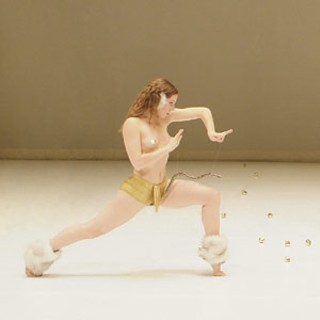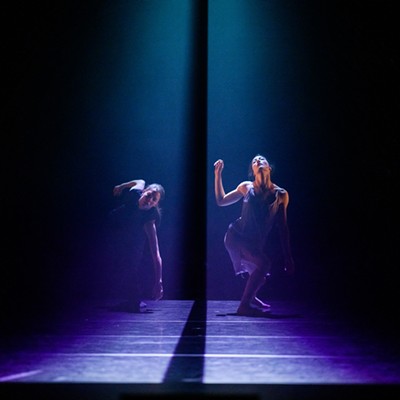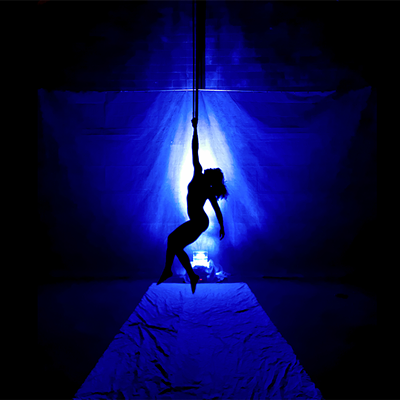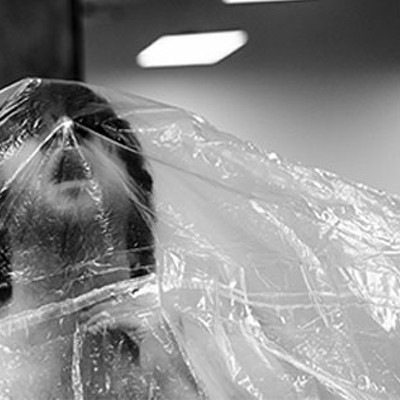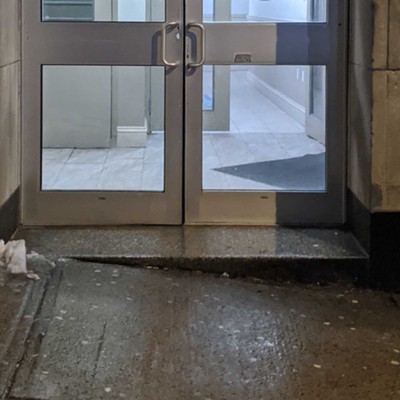The only slot choreographer Marie Chouinard has free for an interview is at eight o'clock in the morning. She's that busy. But where others might still be shaking off traces of sleep at that hour, Chouinard is bright as a sunbeam. And she hasn't even had a morning coffee---her high is all-natural. "I'm awake all the time," she says, laughing, "I can't take drugs or drink tea or coffee---just breathing oxygen is enough."
The Montreal-based dance artist is an unabashed lover of life. She speaks quickly, rolling out richly descriptive sentences that ooze warmth and enthusiasm. When asked how she comes up with her imaginative dance works, she responds without hesitating. "You know how I create?" she asks genuinely, "I create out of joy. I love creating. I am so lucky to be a creator. I am immensely productive and imaginative."
Marie Chouinard isn't kidding. Considered one of this country's most important avant-garde choreographers and performers (last year she was named an Officer of the Order of Canada), the 53-year-old has an impressive roster of richly layered dance works to her name. At the heart of each is a deep fascination with the human body, which Chouinard describes unpretentiously as a medium for "experiencing and sensing the world." Like a painter in love with colour, Chouinard says she's in love with the body, seeking to use it in as many ways as possible in her choreography: "the body and its voice and breath...that's really the medium of my work."
Chouinard describes her most recent work, Orpheus and Eurydice, as "mixing the ideas of love and creation." The story, adapted from Greek mythology, tells the tale of Orpheus going to the underworld to save his dying wife, Eurydice. He is allowed to take her back to earth on the condition that she walk behind him on the return journey, and that he not turn around to look at her until after they arrive. Forgetful (and smitten), he turns to take a peek, his beloved vanishing forever.
For Chouinard, it's a tale about going to the dark side in pursuit of creativity and artmaking. "Sometimes," she explains with francophone flair, "you're going through a very deep underworld to get a jewel out of there." She refers to artists like painter Van Gogh and dancer Nijinsky, whose depressions and descents into madness seem integral, somehow, to their genius. As interested as she is in the notion, Chouinard's own joie-de-vivre keeps her from falling into the same trap. "I'm not at all into that," she laughs.
Though you won't find pointe shoes or tutus in this piece, Chouinard refers to Orpheus and Eurydice as a ballet, reclaiming the word as a way to refer to a full-length dance production. She describes the first 10 minutes of the work as recounting the myth "like a comic strip," which she then dissects at what she describes as a deeper or more "intuitive level." The stage is kept deliberately stark (even the floor is painted white), the dance unfolding upon it through the use of light and beautiful, semi-nude bodies.
The ballet, which has been performed to great acclaim internationally, will feature 10 dancers, each equipped with a wireless mic so the audience will be able to hear the sounds they make, deliberate or otherwise. "Orpheus was the primordial poet," explains Chouinard. "So this (piece) is about the creation of a sound coming from deep inside us...our own underworld."
She then describes a "violent and terrifying" duet where one dancer attempts to wrench sound from another dancer's mouth---making pretty, easy art isn't her aim. "It's like preparing a gift for people," she says of creating for audiences. "I don't only want to please them---I want to give them some nourishment and vision. I might surprise them...I like to take people to the edge of what they're used to."
"You have to see this work twice to see everything," says Chouinard, genuinely excited by her own creation. She then compares the experience of watching it to a recent trip she took to the jungle. "There could be an immense animal beside you, but you might not see it." Then she laughs again, her love of life sparkling through the phone receiver. "But even if you don't see everything, it's still a deep experience."

